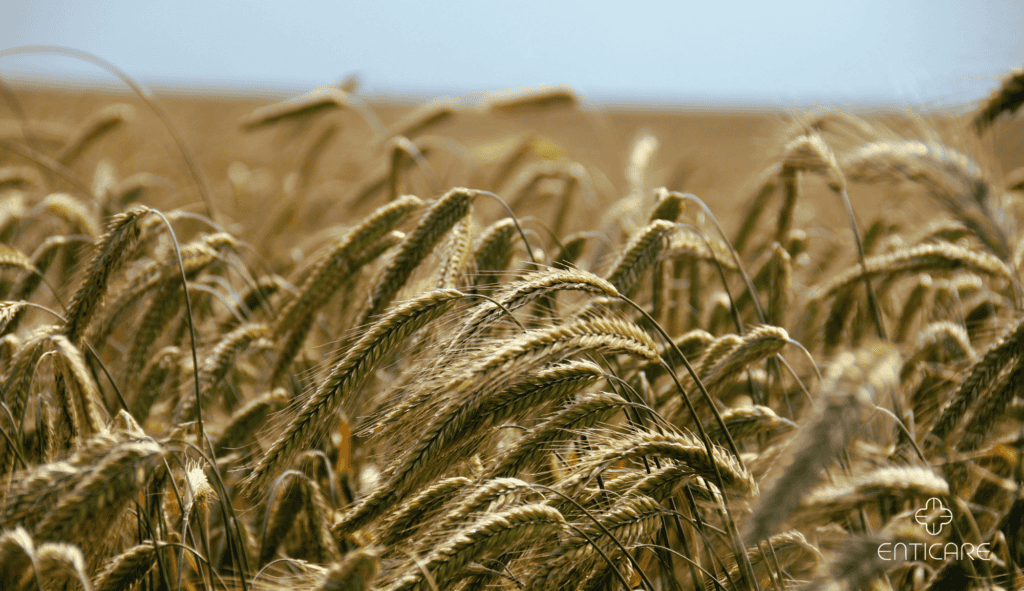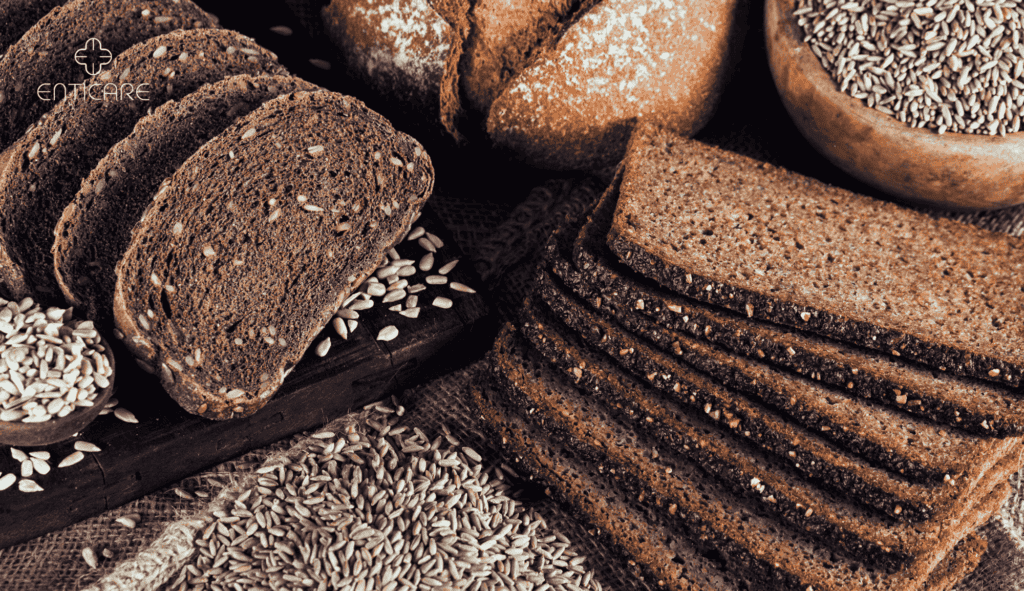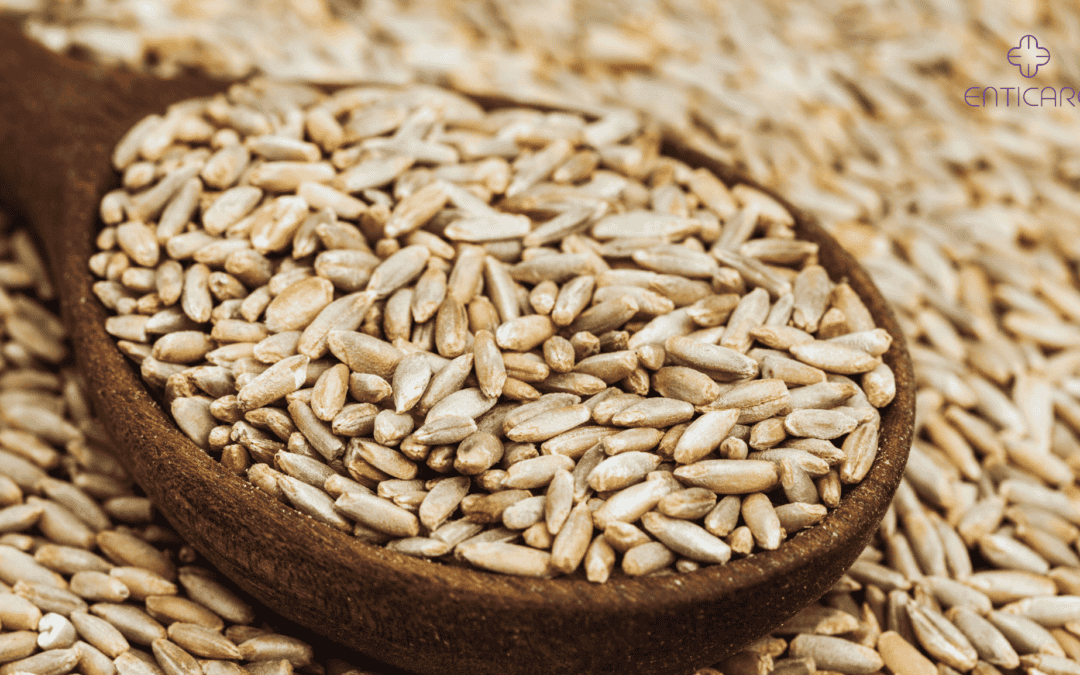Rye is a common grain found in many foods, especially bread, cereals, and certain types of alcohol, and is part of the broader category of cereal grains. While many people enjoy rye-based products without any issues, others may experience severe allergic reactions. Rye allergies are not as well-known as wheat allergies, but they can cause significant health problems for those affected. Identifying the symptoms, understanding the causes, and knowing what foods to avoid are crucial for managing this condition.
In this article, we’ll guide you through the key aspects of rye allergy, from how to spot it to managing your diet and lifestyle. If you or a loved one suspect a rye allergy, this guide will help you take control and seek the right treatment.

What Is a Rye Allergy? Understanding the Basics
A rye allergy occurs when your immune system mistakenly identifies proteins in the rye as harmful, triggering an immune response that leads to an allergic reaction. This response can range from mild discomfort to severe anaphylaxis, making early diagnosis and management essential. For those with severe eye allergies, allergy immunotherapy, including at-home sublingual methods, may offer long-term relief by desensitizing the immune system.
Rye vs. Gluten Sensitivity: What’s the Difference?
Many people confuse rye allergy with gluten sensitivity or celiac disease, but they are not the same. Additionally, gluten intolerance is a separate condition that involves difficulty digesting gluten but does not trigger an immune response like celiac disease or rye allergy. A rye allergy specifically involves the immune system reacting to proteins in rye, while gluten sensitivity relates to difficulties digesting gluten, a protein found in rye, wheat, and barley. Celiac disease, on the other hand, is an autoimmune condition where gluten triggers an autoimmune response that damages the small intestine.
How Common Are Rye Allergies?
Rye allergies are less common than wheat allergies or celiac disease, but they still affect a significant number of individuals. In particular, people with grass pollen allergies and hay fever may be more susceptible to developing a rye allergy due to cross-reactivity.
Cross-Reactivity with Other Grains and Foods
Rye belongs to the Poaceae family, which includes other grains like wheat, barley, and oats. People allergic to rye may also react to these grains, making it important to understand the broader implications of your allergy. People with rye allergy may also have a wheat allergy, which can cause similar symptoms, such as hives, digestive issues, and respiratory problems. Recognizing wheat allergy symptoms is crucial for those who may have cross-reactivity with both rye and wheat.
To learn more about the differences between food allergies and sensitivities, check out this helpful resource from the Mayo Clinic.
Common Symptoms of Rye Allergy: What to Watch For
Recognizing the symptoms of rye allergy can help you take swift action and prevent more severe reactions. In some cases, a rye allergy can lead to a severe reaction, including anaphylaxis, which requires immediate medical attention. In severe cases, rye allergy can lead to anaphylactic shock, which requires immediate medical attention. Symptoms can affect different parts of the body and may vary from mild to life-threatening.
Respiratory Symptoms
Rye allergy often leads to respiratory issues, particularly in individuals with hay fever or asthma. Common symptoms include:
- Sneezing and nasal congestion
- Itchy or watery eyes
- Coughing or wheezing
- Shortness of breath
Exposure to rye pollen, such as from ryegrass, may exacerbate these respiratory symptoms.
Skin Reactions
Skin symptoms are another hallmark of rye allergy. These can develop either through ingestion or contact with rye-containing products. Contact with rye-containing products can lead to contact dermatitis, characterized by red, itchy skin. Common signs include:
- Hives or raised, red welts on the skin
- Eczema flare-ups
- Itchy skin, particularly on the face, hands, or arms
Digestive Issues
For some individuals, consuming rye can result in digestive discomfort due to food intolerance. For individuals with rye allergy, eating wheat can also trigger allergic reactions due to the structural similarities between the proteins in these grains. Symptoms may include:
- Nausea or vomiting
- Stomach cramps
- Diarrhea
If left untreated, these symptoms can worsen over time, so prompt diagnosis is critical.

Foods to Avoid with a Rye Allergy
Managing a rye allergy involves carefully monitoring your diet to avoid rye-containing foods. Some sources of rye may be obvious, while others can be hidden in processed foods or drinks. It is crucial to read ingredient labels carefully to avoid rye-containing foods.
In addition to rye, it is important to avoid wheat flour, which can also cause allergic reactions in individuals with rye allergies due to cross-reactivity.
Bread and Baked Goods
Rye is commonly used in breads and baked products, particularly in dark breads such as pumpernickel or multigrain bread. Check labels on:
- Rye bread
- Pumpernickel bread
- Crackers or crispbreads containing rye
Cereals and Grains
Many breakfast cereals and processed grain products contain rye or rye flour. Look out for:
- Rye flakes in cereals
- Granola or muesli containing rye
- Mixed grain products
Alcoholic Beverages
Rye is often used in the production of certain types of alcohol, especially whiskey and some beers. To avoid allergic reactions, steer clear of:
- Rye whiskey
- Rye beer
- Some craft or artisanal alcoholic beverages
To avoid unintentional exposure, read ingredient labels carefully and ask about ingredients when dining out. Additionally, be cautious with craft beer, as it often contains rye.

Diagnosing and Treating Rye Allergy
If you suspect a rye allergy, it’s crucial to consult with a healthcare provider to get a proper diagnosis. A timely diagnosis allows for effective management and can prevent potentially serious reactions.
An elimination diet can help identify a rye allergy by removing and then reintroducing rye-containing foods.
In some cases, individuals with rye allergy may experience exercise induced anaphylaxis, particularly if they are wheat dependent and consume wheat before physical activity.
Allergy Testing
Doctors can confirm a rye allergy through a series of tests, including a skin prick test, such as:
- Skin prick testing: Small amounts of rye proteins are applied to your skin, and doctors observe if a reaction occurs.
- Blood tests: These measure the level of specific antibodies your body produces in response to rye proteins.
Treatment Options
There is no cure for rye allergy, but treatments focus on managing symptoms and preventing exposure. Common treatment methods include:
- Antihistamines: These medications can reduce mild symptoms such as itching or swelling.
- EpiPen: People with severe allergies may need to carry an epinephrine auto-injector (EpiPen) to counteract anaphylaxis.
- Avoidance: The most effective way to manage a rye allergy is to completely avoid consuming rye-containing foods.
Long-Term Management
Ongoing management of a rye allergy involves vigilance and lifestyle adjustments. Always read food labels, inform restaurant staff of your allergy, and educate family members or caregivers on how to recognize and respond to allergic reactions.
Keeping a food diary can help track and manage rye allergy symptoms.
Conclusion
A rye allergy can significantly impact your quality of life, but with the right information and strategies, it’s entirely manageable. From recognizing symptoms to avoiding common triggers, managing a rye allergy involves vigilance and proactive care.
If you believe you or someone in your family may have a rye allergy, don’t hesitate to seek professional help. Schedule an appointment with our allergy specialists today to receive a thorough evaluation and personalized treatment plan. Take control of your health and enjoy life without the worry of allergic reactions.

